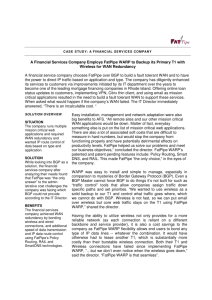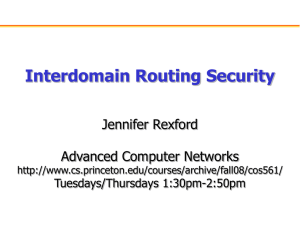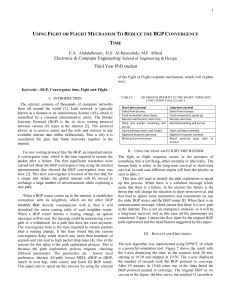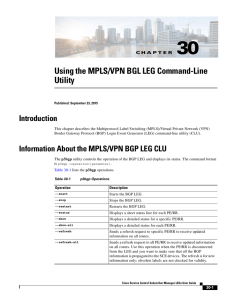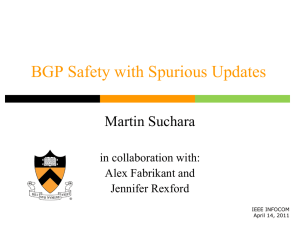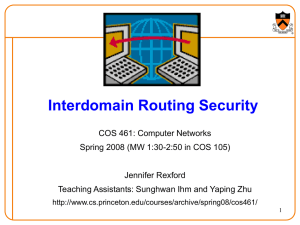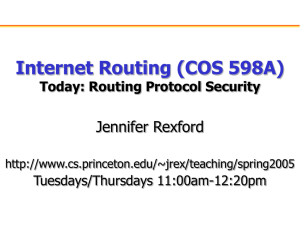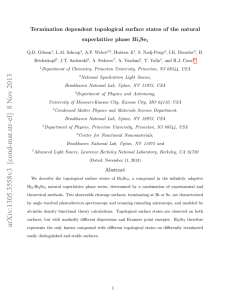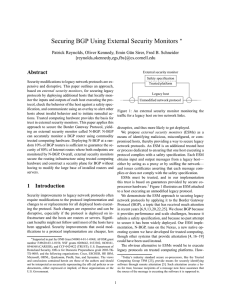net.docx
advertisement
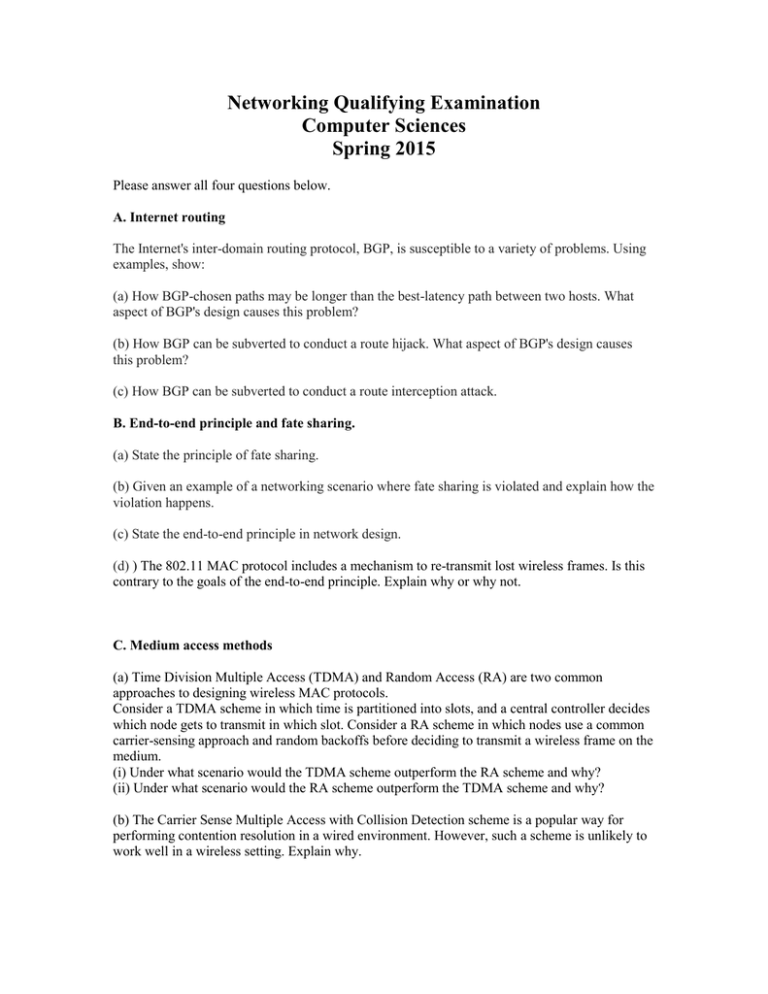
Networking Qualifying Examination Computer Sciences Spring 2015 Please answer all four questions below. A. Internet routing The Internet's inter-domain routing protocol, BGP, is susceptible to a variety of problems. Using examples, show: (a) How BGP-chosen paths may be longer than the best-latency path between two hosts. What aspect of BGP's design causes this problem? (b) How BGP can be subverted to conduct a route hijack. What aspect of BGP's design causes this problem? (c) How BGP can be subverted to conduct a route interception attack. B. End-to-end principle and fate sharing. (a) State the principle of fate sharing. (b) Given an example of a networking scenario where fate sharing is violated and explain how the violation happens. (c) State the end-to-end principle in network design. (d) ) The 802.11 MAC protocol includes a mechanism to re-transmit lost wireless frames. Is this contrary to the goals of the end-to-end principle. Explain why or why not. C. Medium access methods (a) Time Division Multiple Access (TDMA) and Random Access (RA) are two common approaches to designing wireless MAC protocols. Consider a TDMA scheme in which time is partitioned into slots, and a central controller decides which node gets to transmit in which slot. Consider a RA scheme in which nodes use a common carrier-sensing approach and random backoffs before deciding to transmit a wireless frame on the medium. (i) Under what scenario would the TDMA scheme outperform the RA scheme and why? (ii) Under what scenario would the RA scheme outperform the TDMA scheme and why? (b) The Carrier Sense Multiple Access with Collision Detection scheme is a popular way for performing contention resolution in a wired environment. However, such a scheme is unlikely to work well in a wireless setting. Explain why. D. Transport layer methods (a) TCP is the dominant congestion control protocol in the Internet today that utilizes some variant of the Additive Increase Multiplicative Decrease (AIMD) mechanism to achieve its goals. Explain why AIMD is better suited for congestion control, compared to other alternatives, such as MIMD or AIAD. (b) The Random Early Detection (RED) mechanism in router is a network layer approach for congestion control. Would the use of RED in all Internet routers obviate the need for transport layer congestion control mechanisms such as TCP? (c) What are the advantages of the RED router discipline over techniques like Drop Tail.



